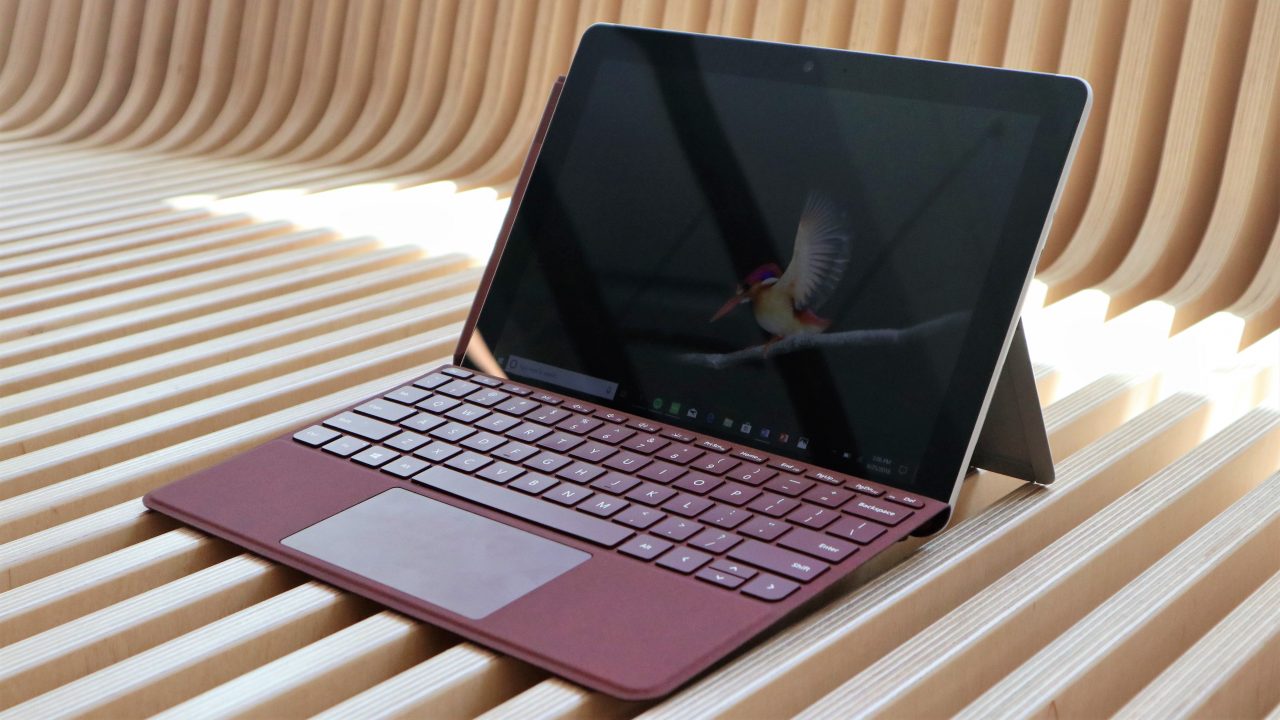It’s a bit hard to believe that the Surface Go has been available for about a year. The smallest device in the Surface family, that is available today, had a lot to prove thanks to its underpowered CPU and smaller footprint but with a year of use under my belt and a lot of time with the Go, here’s how it has fared for the past year.
It’s important to remember what this hardware is designed for; first-line workers, education, and casual use. It’s not designed to be a workhorse, that’s the Pro, but at the same time, it is a Surface, which means it has a pedigree that it should still be a quality piece of hardware.
If you are looking for a more in-depth review, it’s worth taking a look at the initial post as I dive deeper into the specs, functionality, and other aspects of the device. This post is simply a follow-up to that piece and is not intended to be a ‘be-all’ reference guide.
The version of the Go that I have is the 128 GB model with 8GB of RAM, Microsoft is still selling this device for $549.00 and here is how it has held-up for the past year.
Pros:
The size of the Go, in my opinion, is still its best characteristics. The device has an exceptionally small footprint in my bag and I often take the LTE version with me when hitting the road; especially when I don’t intend to work but need to fire off an email where a phone screen doesn’t cut it.
The Go works best when running one application at a time, full screen. Yes, you can snap apps and run two side by side, which is ok for a browser and a word doc, but the screen size is a bit too small for hardcore multitasking. And that’s not a knock against the Go, it’s supposed to be small.
The durability of the device has been exceptional as well. I have let my daughter use it multiple times on road-trips and it has survived the chaos of the backseat. Drops, crumbs, and sticky fingers have been handled well by the hardware.
And like most Surface devices, the screen resolution of 1800×1200 at 217 PPI display is fine for my needs; it’s high enough in resolution that you don’t see any pixels during your daily use, but it’s not overkill where everything feels too small.
Neutral:
Windows 10 on this device has proven to be both a positive and a negative. The positive side is that it runs well on the hardware and includes lots of features like windows snapping that makes it easier to use for productivity.
The downside is that following the disaster that was Windows 8, Windows 10 has taken a large step back for touch input.
Yes, touch works fine for small things like closing a window or moving the cursor, but the OS lacks the system-wide gestures that would make using this device without a keyboard, much easier. Windows 10 is first and foremost a mouse and keyboard OS and without a keyboard, the Go is not nearly as useful; while it does have a ‘tablet mode’, this side of the OS is all but forgotten at this point.
And the keyboard, which does not come with the device, is cramped. That’s not a big surprise as the device is small but I would hesitate to recommend the Go to anyone who plans on doing a lot of typing.
The final neutral comment is around the power button. Nearly every Surface device I have used has had the same issue where sometimes you press the power button and the device does not turn on. It’s not that the battery is flat, it’s that the device is somehow frozen in an off state.
This requires a hard reboot and the problem doesn’t occur all that often but when you least expect it, the Go needs a quick hard reboot.
Cons:
With one of the newer updates to Windows 10, Microsoft has fixed the previous issues I had with the device where the battery would drain when you thought it was hibernating. At this point, as long as you know the performance you are getting with the low-end Pentium chip inside the hardware, the biggest complaint is the price.
The Go is now a year old and this version of the hardware is still being sold by Microsoft for $549.99; the Go is no longer worth that premium. This tablet needs to be dropped by at least $100 to make sense at this point in the lifecycle of the hardware and the entry-level device, with lower RAM and storage, should start at $299 but Microsoft is still selling it for $399.
And Microsoft, if you are listening, the bezels need to go the way of the Dodo.
—
Overall, the thing I really like about the Go is its size. I’d love for a version of the Go with a high-end CPU, Thunderbolt 3, and a dock but for now, that’s not an option.
But should you buy one today? That’s a tough question to answer as the internals are certainly need a bump, the price needs to be dropped, and the keyboard isn’t perfect. But, if you can find one on-sale, especially the mid-grade model for around $400, it’s a good travel companion and something that is great for the back of an airplane.




